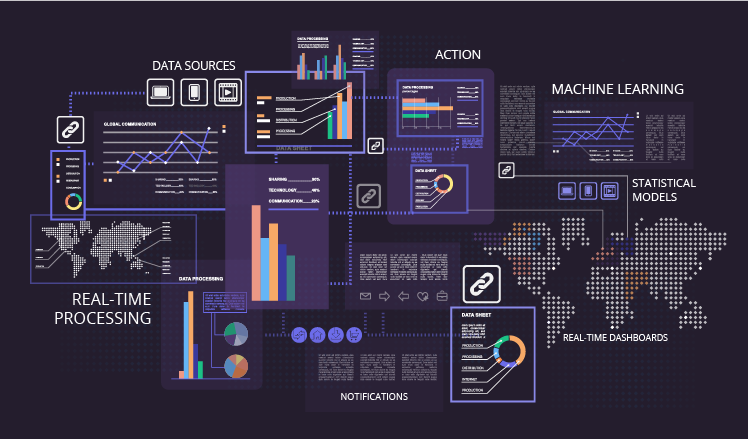Many CIOs and other executives are finding ways to capitalize on insights gained from their data – using analytics to evaluate risk, make better decisions, or engage more effectively with customers. Yet, does data analytics really give companies a big competitive advantage?
The answer is an emphatic yes! Just look at these examples below to see how.
1) Global automaker: Autonomous vehicles
Imagine being able to let go of the steering wheel while driving and still be able to resume control of it—or to totally disengage from the driving process. A global automaker is moving closer to making this a reality as it works to develop highly automated and fully autonomous vehicles.
The company believes by developing such vehicles, it can provide accident-free driving and enhance vehicle and road safety. But achieving this requires rigorous testing and the ability to collect massive amounts of data from cameras and sensors attached to a car, to perceive its surroundings, and detect issues. The automaker must then make this data available to developers and data scientists, who train algorithms known as deep neural networks. Through these algorithms, a car can learn to make smart decisions in real time using sensor data, enabling it to drive safely.
Data scientists and developers also use this data to identify anomalies, helping them refine automated and autonomous driving systems. The challenge is how to manage and analyze the enormous amounts of data generated all over the world. To accelerate the development of autonomous driving functions, this automaker needed a solution that would allow it to access and share data globally with high performance on a massive scale. The company also wanted to minimize replication and avoid data duplication to optimize hardware resources.
The automaker needed a data platform to collect and manage massive amounts of data from test vehicles and make them available to developers across the world. To accomplish this enormous undertaking, they deployed HPE Ezmeral Data Fabric, accelerating its development of autonomous driving functions with ready access to global data. You can read the full case study here.
2) Large oil pipeline company: Analytics at the edge
Another example of successful analytics in action is demonstrated by a large oil pipeline company, who has power technology running on wellheads pumping stations. Their pipeline isn’t just a big piece of pipe; there’s a lot of electronics and intelligence all along the way. Every one of these pumping stations is quite smart.
The HPE Ezmeral Data Fabric enables this pipeline company to collect data and engage in analytics – right at each station. Additionally, they can see a global view of the data without having to have a human manually transfer the file or run a script. All of this is seamless, so the technician doesn’t have to be involved in the process. Instead, the data is continuously flowing into the data fabric, providing instant access to real-time global data.
3) Major retailer: Instant insights with a global view
Today, retailers in a local store collect a lot of data, but the store manager can’t see any of the analytics in real time. All the collected data is typically shipped to the corporate headquarters where someone runs analytics. Next, the results can be sent to the local store – probably the next day or even later. Hence, the store manager can see what happened yesterday, the week before, or even the month prior, but they are looking at old data instead of what is happening right now.
Every major retailer is trying to automate this process in order to get nearly instantaneous analytics in the local store. And HPE helps some of the largest retailers in the world create these data fabrics that are tying together all this distributed data – providing a global view of this data in real time and giving them the competitive advantage they need.
4) Medical supply companies: Results faster, security maintained
My last example is from the medical device industry. Many large medical supply companies are using data fabric to modernize the entire data flow from devices within the healthcare system.
For example, why does it take 15 hours to get a result from a CT scan or an MRI? Can these companies cut that time down to 15 minutes? The only way to do that is to embed a lot of analytics inside the CT scanner. But if they wanted to glean global insights from those images in addition to producing local analytics, they would need to send the data to somewhere else — somewhere where they could implement machine learning on images coming from thousands of CT scanners all over the world. This could improve the algorithms for more automated spotting of anomalies.
You may think this type of data sharing has all kinds of interesting problems with security. For example, certain country laws say you can’t remove data from that country. So how do you set up controls for such a policy? The HPE Ezmeral data fabric can easily accomplish that by setting up a policy that states data on these machines cannot leave this rack, this building, or whatever location is determined. This means you can have data sovereignty by policy.
This article has been published from a wire agency feed without modifications to the text. Only the headline has been changed.




